 Weird Stuff
Weird Stuff  Weird Stuff
Weird Stuff  Mysteries
Mysteries 10 Tragic Disappearances and Deaths in Joshua Tree National Park
 History
History 10 Ways Childhood Really Sucked in the Old West
 Music
Music 10 Name Origins of Famous Bands from the 1990s
 Religion
Religion 10 Biggest Turnarounds by the Catholic Church
 Weird Stuff
Weird Stuff 10 Unbelievable Times Laws Had Unintended Consequences
 Humans
Humans Ten Historic Women Who Deserve Way More Credit Than They Got
 Movies and TV
Movies and TV 10 Films That Spawned Major Lawsuits
 History
History Ten Times Towns Were Wiped Off the Face of the Earth
 Creepy
Creepy 10 of the Most Disturbingly Haunted Public Houses in the UK
 Weird Stuff
Weird Stuff 10 Niche Subcultures That Are More Popular Than You Might Think
 Mysteries
Mysteries 10 Tragic Disappearances and Deaths in Joshua Tree National Park
 History
History 10 Ways Childhood Really Sucked in the Old West
Who's Behind Listverse?

Jamie Frater
Head Editor
Jamie founded Listverse due to an insatiable desire to share fascinating, obscure, and bizarre facts. He has been a guest speaker on numerous national radio and television stations and is a five time published author.
More About Us Music
Music 10 Name Origins of Famous Bands from the 1990s
 Religion
Religion 10 Biggest Turnarounds by the Catholic Church
 Weird Stuff
Weird Stuff 10 Unbelievable Times Laws Had Unintended Consequences
 Humans
Humans Ten Historic Women Who Deserve Way More Credit Than They Got
 Movies and TV
Movies and TV 10 Films That Spawned Major Lawsuits
 History
History Ten Times Towns Were Wiped Off the Face of the Earth
 Creepy
Creepy 10 of the Most Disturbingly Haunted Public Houses in the UK
10 Things CSI Shows Get Wrong (According To A Real CSI Tech)
Forensic movies and TV shows are awesome, but they are often so very wrong about so many things. As a crime scene investigator myself, I hope this list clears things up for everyone.
10 DNA Testing Takes Time
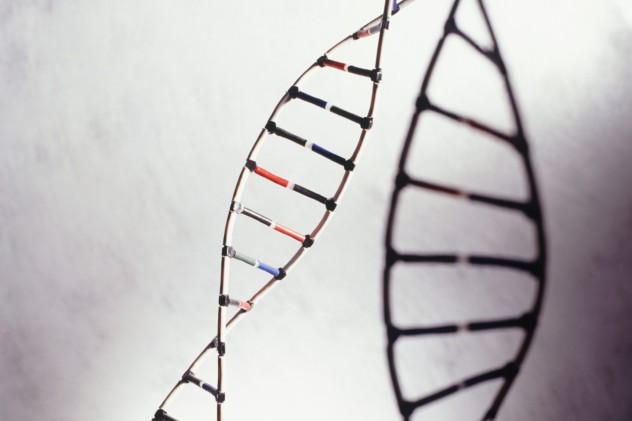
Testing DNA takes a long time. One of the newest technologies in DNA analysis is called RapidDNA and can reportedly give you results in 90 minutes, but it’s a newfangled innovation that isn’t widely used yet. It isn’t even approved by the FBI or compatible with their database.
The amount of time it takes to get DNA results isn’t as much about the speed of the instruments as it is about the backlog. Let’s say at one department there are 50 cases in one month, each with five DNA samples to be analyzed. That’s 250 DNA samples. Now let’s say this department has a RapidDNA instrument. While they are quick, these instruments can only process five samples at a time. So in a 24-hour period, the department can run the machine 16 times, meaning that even if someone is constantly at the machine, only 80 samples can be analyzed each day. Even after three days, this theoretical department still hasn’t gotten to all the samples that are waiting in line.
Now let’s say there’s a homicide and the lead detective has collected 30 DNA samples to be analyzed. He first has to wait in line for a few days. You might say, “Well, why don’t you get a machine that can analyze more samples at a time?” That’s very clever of you! But there is again a problem. The bigger machines have bigger plates that can run hundreds of samples at a time, but they can only be used once. Also, these larger machines are not RapidDNA systems, so it usually takes about three days for the samples to go through all the required steps even without backlog. So again, we have 250 DNA samples to run and use three plates with 100 slots. Two of those plates are full, and one of them is only half full. The analyst is not going to run that third plate when it’s only half full! That’s like throwing away money! So the investigation is going to have to wait until more crime is committed and more samples are collected to fill up that plate. No matter which system is used, DNA testing is going to take at least a few days. And that’s being optimistic!
9 Fingerprints Are Hard To Find
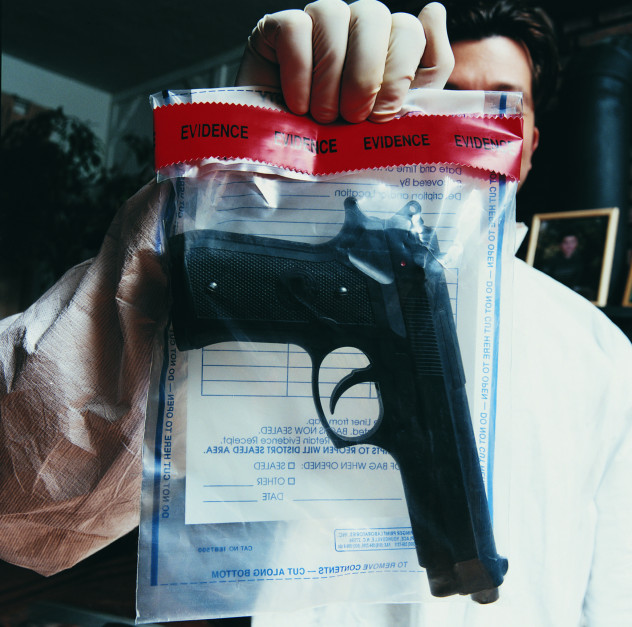
Fingerprints are not everywhere you look, and there are many ways that fingerprints can be ruined. Let’s look at a gun, for example. Guns are generally held by the grip, which is an area that’s all bumpy and textured so that it doesn’t slip in a person’s hand. This is very good for not dropping guns, but it’s terrible for leaving fingerprints. That person’s sebaceous oils will not be evenly applied onto the surface because the ridges of his fingerprints don’t touch the surface evenly. This leads to no visible print on the gun.
Now you ask, “What about the trigger? That’s not bumpy!” Again, you are quite the clever one, but there’s still a problem. Have you ever had your fingerprints taken? It’s a fairly delicate process. You must carefully touch your fingers to the paper without letting them slip so that the fingerprint doesn’t smudge. When someone pulls the trigger to the gun, it is very unlikely that their finger is going to stay so perfectly put that the oils deposited by their fingerprints aren’t smudged.
“Okay, wise guy. What if they touch the barrel?” You don’t have to be rude, I was getting to that. The barrel is the best hope for finding fingerprints. If fingerprints are to be found, that is generally where they are. But it’s still a little rare because an officer is not going to hand a fingerprint analyst a gun that is locked and loaded. They will first remove the magazine and empty the chamber. How do they do this? By handling the gun and touching it all over. Are they wearing gloves? Yes. Can delicate fingerprints survive being assaulted by gloved hands? Nope.
8 Blood Doesn’t Glow
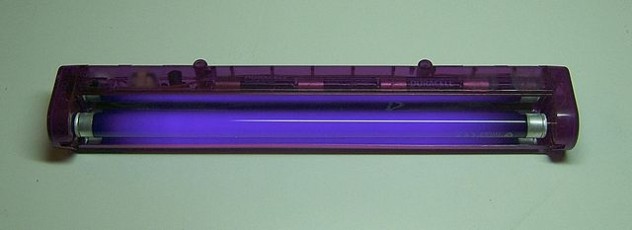
Contrary to popular belief, blood does not glow under ultraviolet (UV) light. UV lights are used all the time on network television to create that classic blue glow. Many bodily fluids do glow under UV light—semen, urine, breast milk, saliva—but blood, rather than glowing, turns super black. It doesn’t even look like blood anymore. It looks like black tar, and it’s really hard to see in most situations.
But don’t despair! You can make blood glow, just not with a UV light! Since you’re so clever, you may be familiar with a chemical called luminol, which does make blood glow a bright blue color without using a UV light. Unfortunately, it’s not a perfect solution. In order to visualize the reaction of luminol with blood, it needs to be pretty dark. In bright daylight, it’s almost impossible to see. Also, the fluorescence only lasts a few seconds. The investigators need to guess where the blood will be, set up their cameras, spray the luminol, and then quickly take a picture before the glow disappears. It’s a last resort, but at least it looks cool.
7 DNA Isn’t Always Useful

A man is beaten and stabbed to death. There are two suspects—his wife and his close friend. Scrapings are taken from under their nails to see if the dead man’s DNA is in them. If there was a struggle, it is likely that the culprit would have grasped the deceased at some point, transferring his DNA to their hands—and skin cells like to hang out under people’s nails. The friend doesn’t have any of the deceased man’s DNA, but the wife does. Is she guilty?
Maybe, but that DNA didn’t prove a darned thing. A wife hugs her husband, holds his hand, scratches his back, shares the same bathroom, and so on. There are so many ways for her husband’s DNA to get under her fingernails that it would almost look suspicious if she didn’t have any of his DNA there. This type of scenario happens more than you would think, and DNA is usually pretty useless in these cases.
Here’s another scenario. A man robs a store. He is seen on surveillance at one point opening a refrigerator door to grab a drink. Is his DNA on the refrigerator door handle? Probably. Is the DNA of every other person who opened that same door to buy a drink also on the door handle? Yup. If you take a sample from that handle, you’ll be getting a DNA sample of hundreds or thousands of innocent people, plus the one guilty person. Not helpful.
6 Fingerprints Aren’t Always Useful
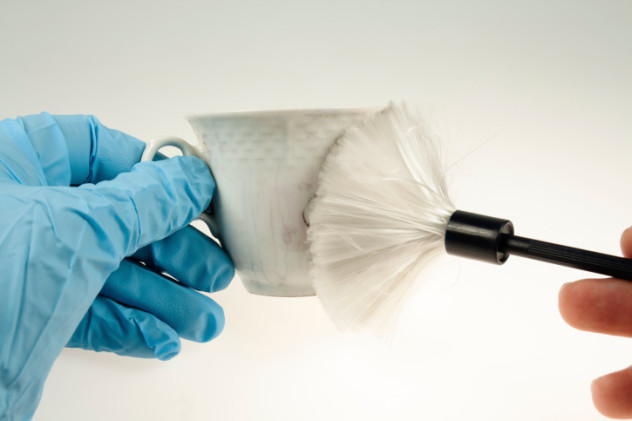
The term “partial print” has become very popular in movies lately. They say it, but I don’t think they know what it means. I recently heard it said, “I found a print but it’s only a partial, so it will take some time to analyze.” That is a ridiculous thing to say!
A partial print means you can’t see the entire perfect fingerprint, and that’s the kind of print detectives find 90 percent of the time. It will actually take less time for the analyst to process because there are fewer lines there to analyze. The analyst looks for as many identifying features on the print he or she is given as possible and then looks for a fingerprint with the exact same identifying features in the exact same positions. But, even if the analyst can find all the same identifying features in all the same positions, it’s not a match unless there are a significant number of these matching features. If it were a tiny partial print with very few features, no matter how closely the analyst looked at that thing, there would be only so many features distinct enough to count as identifying features. The print would have to be thrown out.
5 Analyses Are Often Inconclusive
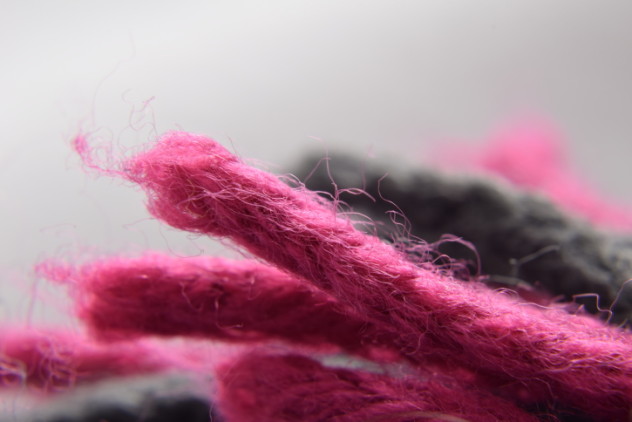
DNA and fingerprint analysis are unique in that they are pretty darn conclusive. If the profile obtained from a DNA sample matches an individual’s DNA profile, your chances are extremely good that that’s the guy. If the fingerprints match, the case is even stronger. Most other analyses are not like this, though.
Hair and fiber samples might look like a match when compared to a known source, for example, but that doesn’t necessarily mean that they’re a match. Most people with the same hair color and ethnic background will have “matching” hairs. Just because a red hair found at a scene matches the red hair of a suspect doesn’t mean that it wasn’t his redheaded brother or the redheaded friend of John Doe.
Fibers are even less specific. Let’s say you find a blue fiber that matches the blue fibers taken from a suspect’s jacket. He’s not the only guy in the world who owns a jacket like that. These analyses will help a case, but they absolutely cannot prove beyond a doubt that a suspect was the killer. Next time you hear someone say that, you should shake your fist and say, “Poppycock! Give me more evidence!”
4 Forensic Analysts Aren’t Authority Figures
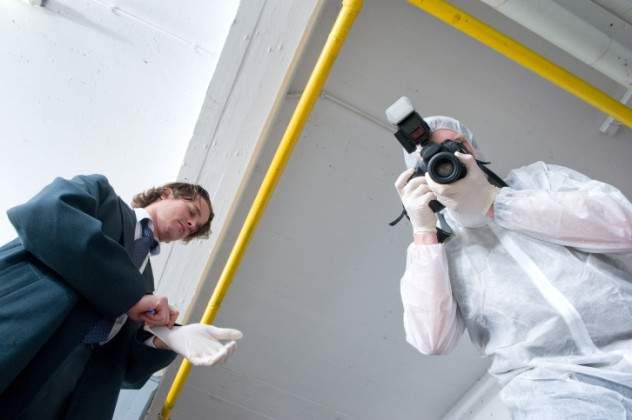
Forensic analysts are not officers and are not rich. Well, most aren’t. In some counties, there are sworn crime scene investigators who carry guns and have the ability to arrest people. In most places, however, this is not the case. Investigators do not carry guns or even handcuffs, they do not have the ability to arrest people, and they are considered civilians, not officers. So in the chain of command at a police department, forensic analysts are technically near the bottom rung, not the get-out-of-my-way-while-I-solve-this-crime types that you see on a lot of shows involving forensic analysts.
This also means that they are not paid a lot of money. Dexter could not have possibly owned a boat, two apartments, and a luxury SUV with a crime scene investigator’s income. In a police department, there is one type of employee who is very paid well: sworn officers. And rightly so with all the danger they have to put up with in their jobs. However, most forensic scientists are not sworn, which means they do not have to put up with crazy people on the streets and therefore are paid less. In many cases they are paid a lot less.
I, for example, work as a full-time crime scene investigator. My husband works full time, too, and we can barely afford rent for a one-bedroom apartment. Seriously, I’m looking for a second job. Let me know if you know of anything.
3 Forensic Scientists Are Not Experts About Everything

So many times, I’ll watch a movie or show (I’m looking at you again, Dexter) and I’m amazed at what thorough knowledge of everything in the universe one forensic scientist will have. Again, on Dexter (just because I love it so much), Masuka is a DNA analyst who also gives expert opinions on cause of death, entomology, trace analysis, and everything else under the sun.
I would kill (figure of speech only) to get that kind of expertise about everything. Ninety-nine percent of the time, an expert is only an expert in one field and calls in the other experts for anything outside of his or her area of expertise. Not to say that there aren’t forensic analysts with a general knowledge of a lot of topics, but again, you’ll be hard-pressed to find someone who is qualified to do every kind of analysis that exists. So, Masuka, I’m calling shenanigans.
2 Investigators Spend A Lot Of Time On Paperwork

In the shows, it seems that if they’re not making love to supermodels, buying expensive things, or just making it rain in general, crime scene investigators are at crime scenes doing exciting stuff. In actuality, everything that’s done at a crime scene has to be painstakingly documented. A lot of this documentation is done in an office, not at the scene.
If someone goes to a scene and takes photos, makes a diagram, and collects evidence, all of that has to be documented. The photos have to be submitted to evidence on a CD or other media with a chain of custody. The diagram has to be redrawn using a diagramming software to make it more legible. A chain of custody and description for each item of evidence collected must be made. And then that investigator has to write a report of everything he or she did at the scene. One hour at a crime scene can generate several hours of paperwork. Not the never-ending stream of excitement you were expecting? You’re not alone.
1 Blood Doesn’t Always Get All Over The Place
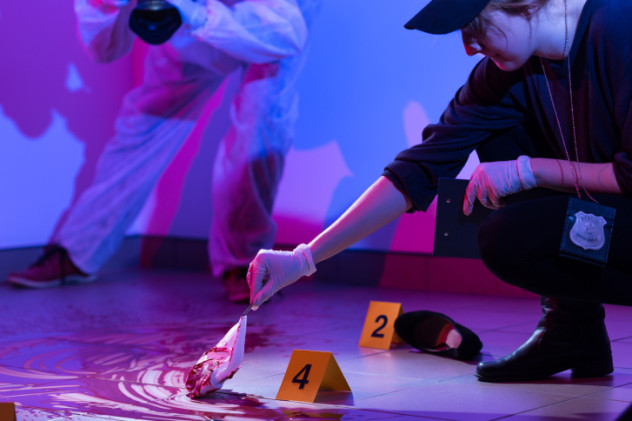
Blood doesn’t splatter everywhere every time someone is hurt. Movies are somewhat realistic when it comes to the gore, except in one respect: the amount of blood. In the movies, when someone is stabbed or shot anywhere on his or her body, blood goes absolutely everywhere. Just last night I watched a movie in which a girl was stabbed in the abdomen, and within 30 seconds of writhing around, she had lost at least two pints of blood and continued to bleed profusely. This is incorrect.
Head injuries and severed arteries do tend to provide the enormous amount of bleeding that we’ve come to expect, and so do a few other specific places, but most of the time? Not really. I once went to a scene where a man was stabbed in the stomach with a 13-centimeter (5 in) blade, and we tried in vain to find a single drop of blood. He was stabbed in a grassy yard, but seriously, even though we knew exactly where he was standing when he was stabbed, we couldn’t find any blood.
At another scene where a girl was shot in the leg in the middle of nowhere and had to be carried to a car, I saw maybe a half cup of blood. On the other hand, there was definitely a long, winding trail of blood following the stab victim just like in the movies at another scene, but he was stabbed almost 10 times, and two of those were in the head. So, he earned the right to bleed everywhere.
In short, I love a good horror or crime movie as much as anyone, but there comes a point in every one of them where I think, “Awesome. But yeah, that’s way too much blood.”








